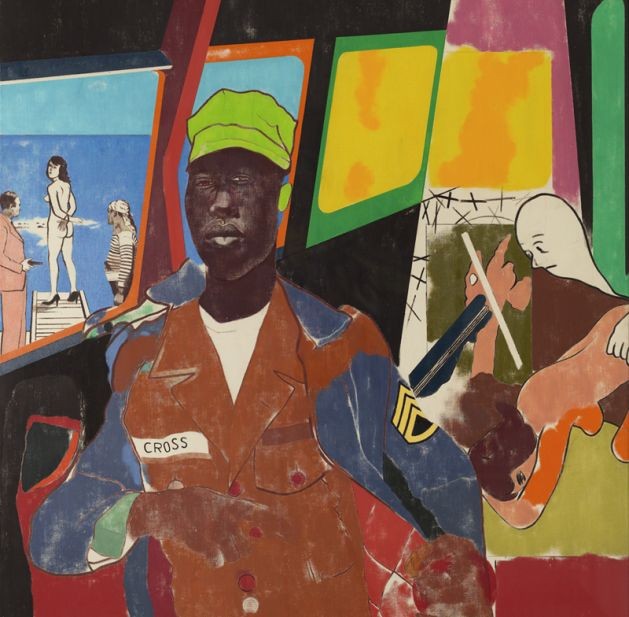R. B. Kitaj
28 Feb - 11 May 2014
R.B. KITAJ
Diaspora
28 February - 11 May 2014
Curators: Gunnar B. Kvaran and Therese Möllenhoff
The decade following R.B. Kitaj’s death (1932-2007) has reinforced his art as a significant contribution to the history of figurative painting.
Kitaj was American, but lived almost 40 years in England. His art developed in the London art scene beginning in the 1960s, when a dynamic generation of young artists took painting into a new direction by exploring impulses from both the
figurative tradition and popular culture. Their vision sparked off the considerable international interest in painting that flourished in the 1970s and 80s. Kitaj has been associated with the ‘School
of London’ generation, a label that never referred to a specific group or style, but was used in connection with a number of painters preoccupied with the figurative aspect of painting at a time when abstract art had dominated the art scene for a long time. Kitaj was one of the most prominent figures in the British art scene and also had a major impact on the development of British pop
art. This was the context in which Kitaj developed as an artist, and although his art may be associated with the trends in figurative painting and British pop art, the most important influence on his art was a sense of not belonging, Diaspora, spawning an oeuvre in which symbols and references of visual, literary, historic and personal origin are brought together into colourful, narrative and complex compositions.
Kitaj has an important presence in the Astrup Fearnley Collection, which contains some of his most outstanding works. In this exhibition we present a selection of these works, together with works from other Norwegian collections, in an exhibition that reviews Kitaj’s contribution as a historical artist, but also as one whose works still resonate with those of younger generations of artists.
Diaspora
28 February - 11 May 2014
Curators: Gunnar B. Kvaran and Therese Möllenhoff
The decade following R.B. Kitaj’s death (1932-2007) has reinforced his art as a significant contribution to the history of figurative painting.
Kitaj was American, but lived almost 40 years in England. His art developed in the London art scene beginning in the 1960s, when a dynamic generation of young artists took painting into a new direction by exploring impulses from both the
figurative tradition and popular culture. Their vision sparked off the considerable international interest in painting that flourished in the 1970s and 80s. Kitaj has been associated with the ‘School
of London’ generation, a label that never referred to a specific group or style, but was used in connection with a number of painters preoccupied with the figurative aspect of painting at a time when abstract art had dominated the art scene for a long time. Kitaj was one of the most prominent figures in the British art scene and also had a major impact on the development of British pop
art. This was the context in which Kitaj developed as an artist, and although his art may be associated with the trends in figurative painting and British pop art, the most important influence on his art was a sense of not belonging, Diaspora, spawning an oeuvre in which symbols and references of visual, literary, historic and personal origin are brought together into colourful, narrative and complex compositions.
Kitaj has an important presence in the Astrup Fearnley Collection, which contains some of his most outstanding works. In this exhibition we present a selection of these works, together with works from other Norwegian collections, in an exhibition that reviews Kitaj’s contribution as a historical artist, but also as one whose works still resonate with those of younger generations of artists.

